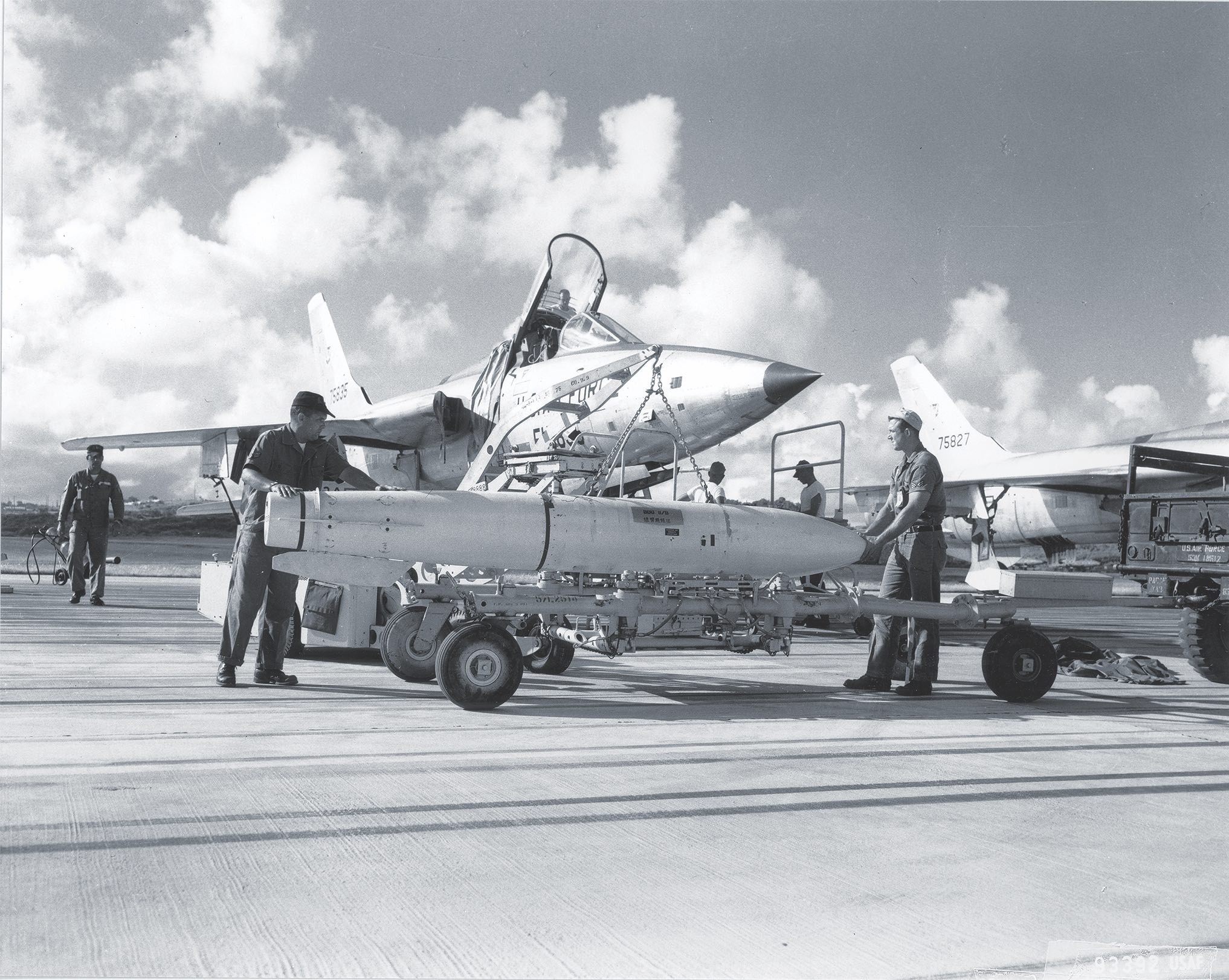The short answer is yes, though with important qualifications.
Prior to 1968, the nearest the United States came to deploying nuclear weapons in Vietnam was in early 1954 when the French garrison at Dien Bien Phu was in danger of being overrun by an independence movement led by communist Viet Minh forces, the predecessor to the North Vietnamese Army. President Dwight D. Eisenhower and his advisers privately discussed the use of tactical nuclear weapons to save the fort. Eisenhower chose not to deploy nuclear weapons because their use would generate an international outcry and not guarantee the French garrison’s survival.
Between 1963 and 1965, the U.S. Army conducted a series of war games to examine the use of tactical nuclear weapons in land warfare. Though largely focused on a potential war against the Soviet Union in Europe, the games, code-named Oregon Trail, also looked at scenarios pitting the U.S. against communist China in Asia. The Army concluded that tactical nuclear weapons were highly effective against massed formations of enemy troops and vehicles but only marginally effective against dispersed or dug-in enemy formations, such as the United States faced in South Vietnam.
The lessons of Dien Bien Phu and Oregon Trail became relevant in early 1968 when North Vietnamese forces surrounded the Khe Sanh Marine base near the Demilitarized Zone separating North and South Vietnam. Prompted by President Lyndon B. Johnson’s anxiety over the fate of Khe Sanh, the chairman of the Joint Chiefs of Staff, Gen. Earle G. Wheeler, sent a message on Feb. 1 to Gen. William Westmoreland, head of Military Assistance Command, Vietnam, recommending that he investigate the potential use of tactical nuclear weapons to break the siege. Westmoreland had already initiated a secret study code-named Fracture Jaw to do just that. When Johnson learned about it, he reacted with dismay and anger. The president ordered that Fracture Jaw be shut down, and all work on the study ceased on Feb. 12.
It is not entirely clear whether Westmoreland supported the idea of using nuclear weapons or was performing his due diligence as MACV commander and weighing all military options. Given that Westmoreland never doubted that the garrison could be defended with conventional means, one must conclude that Fracture Jaw represented due diligence rather than a preferred tactic.
The final episode of Vietnam’s nuclear weapons story came in late 1969, when President Richard Nixon initiated a White House planning group code-named Duck Hook that examined the possible use of nuclear weapons against North Vietnam if Hanoi did not agree to U.S. terms at the Paris peace talks. Like Eisenhower and Johnson before him, Nixon decided that the use of nuclear weapons carried too great a political risk without guaranteeing the diplomatic or military outcome he desired. V
Dr. Erik Villard is a Vietnam War specialist at the U.S. Army Center of Military History at Fort McNair in Washington D.C.
This article appeared in the February 2022 issue of Vietnam magazine. For more stories from Vietnam magazine, subscribe and visit us on Facebook.





